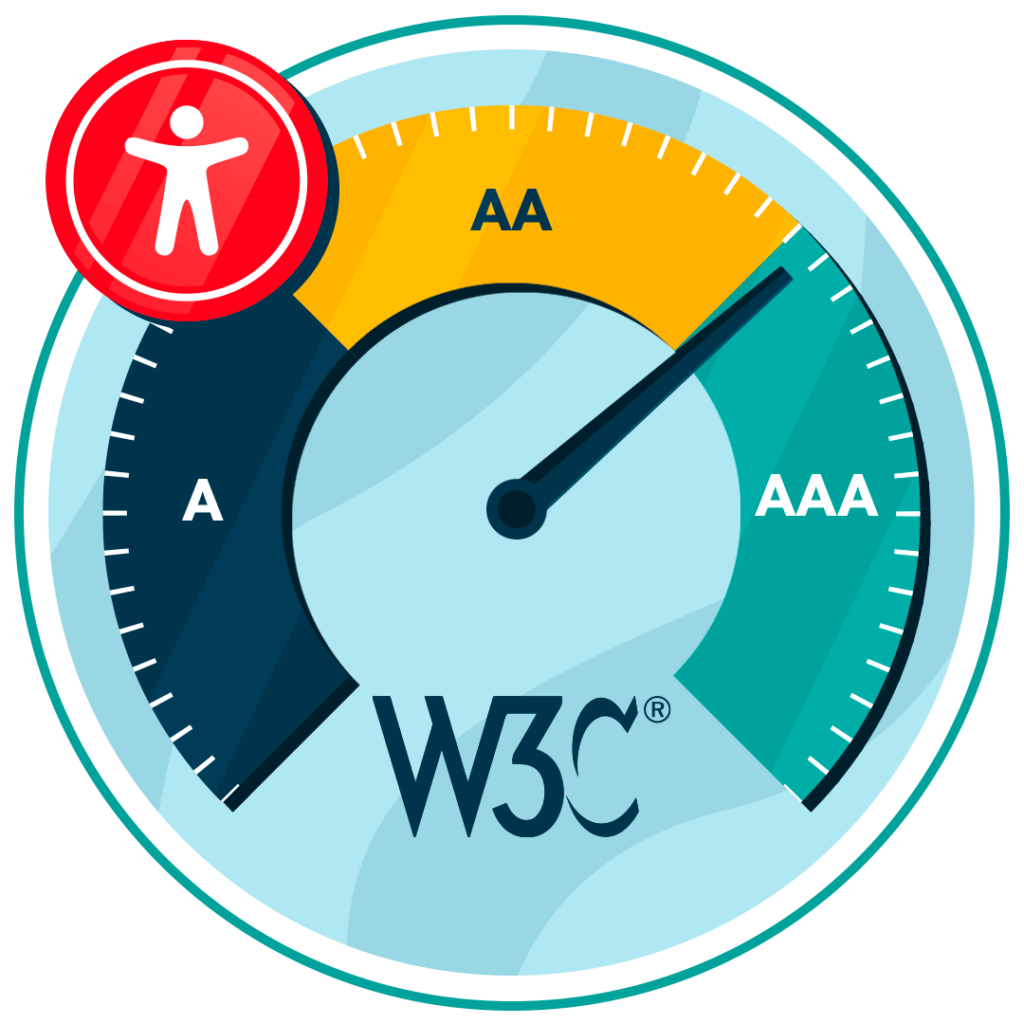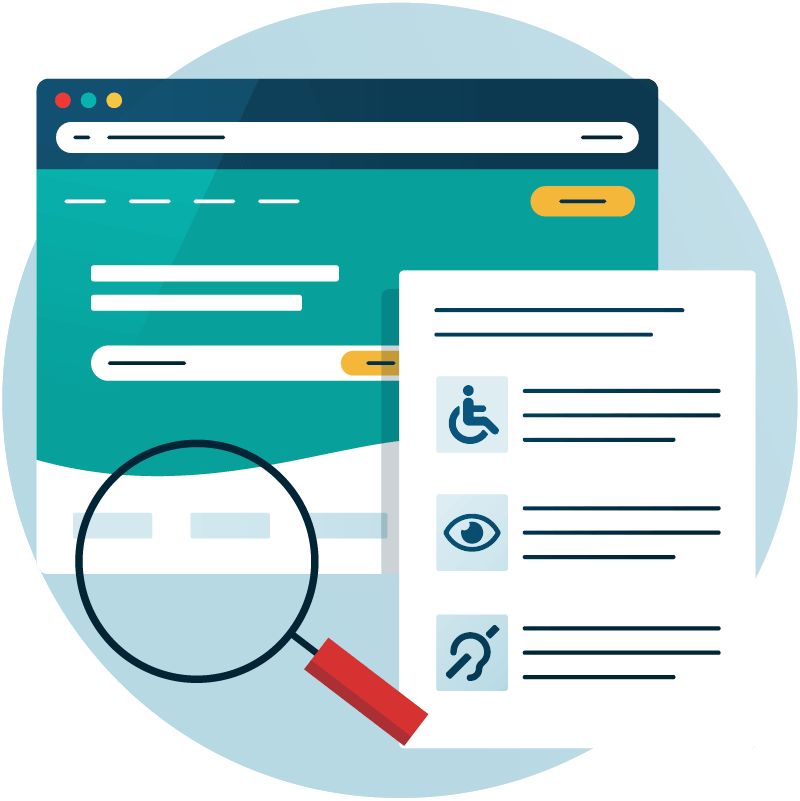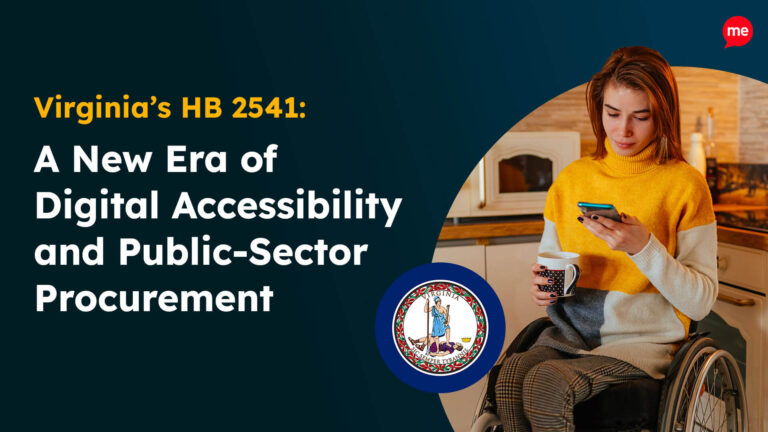In April 2024, the Department of Justice (DOJ) released a significant update to the Americans with Disabilities Act Title II regulations, mandating that state and local government entities, including libraries, must ensure digital accessibility across all online services.
Libraries play a critical role within communities, providing resources, information, and digital tools. So, ensuring equitable access should already be considered essential. However, the new DOJ ruling makes it a legally mandated requirement.
Lack of knowledge will not be accepted as a justifiable reason for non-compliance, meaning libraries that have been slow to adopt inclusive best practices up until now must take immediate corrective action to meet the requirements in time.
Key Requirements for Libraries under the New ADA Title II Ruling
Because libraries are officially classified as ‘public entities’ under ADA Title II, all digital resources must be “easily usable and accessible” to patrons with disabilities without the need for special requests. The Title II update introduces specific requirements that libraries must follow to comply with accessibility standards. Here is a breakdown of the most critical factors.
WCAG 2.1 Compliance
To meet accessibility standards, all web content and digital platforms must comply with the Web Content Accessibility Guidelines (WCAG) 2.1 at Level AA. This includes:
- Web pages
- Digital catalogs
- Mobile apps
- PDFs
- E-books
- Account management systems
Compliance Deadlines
The compliance deadlines for libraries are based on the population they serve, allowing smaller libraries additional time to implement the necessary changes:
- Libraries serving populations of 50,000 or more must be fully compliant by April 24th, 2026.
- Libraries serving populations under 50,000 have until April 26th, 2027.

Ongoing Accessibility Responsibilities
The new regulations enhance, but do not replace, current requirements to provide consistent accessibility for all online services, programs, and activities. Here’s a closer look at what this entails:
- Full accessibility for all new digital resources: All new content created or uploaded after the compliance deadline must meet WCAG 2.1, Level AA standards.
- Continuous accessibility of existing resources: Accessibility must be maintained when updating existing resources. Regular accessibility testing and auditing are encouraged to identify and correct issues that may interfere with accessibility after updates.
- Proactive accessibility adjustments: Instead of relying on accommodation requests, libraries are now expected to create an accessible environment by default so individuals with disabilities can use digital resources without additional help.

Free ADA Compliance Audit of your Website
Detecting ADA compliance issues has never been easier than it is now. At Recite Me we offer a free automated scan of your websites homepage. This will identify and highlight any non-compliance on your website, including color contrast checks. Followed by recommendations on how to implement the necessary changes to improve your websites accessibility score and standing.
ADA Title II Exceptions for Libraries
While the ADA Title II update for libraries mandates accessibility for nearly all digital resources, there are a few specific and strictly defined exceptions.
Noncompliance That Does Not Impact Access
The new rule specifies that minor issues may be permissible if they don’t affect accessibility. For example:
- Minor technical glitches that don’t interfere with accessibility standards may be allowed.
- Any technical shortcoming that doesn’t affect timeliness, privacy, independence, or ease of use may be considered acceptable.
While these exceptions offer some flexibility, libraries are encouraged to adopt a proactive approach to address as many online access barriers as possible.
Third-Party Content
Digital content created by an unaffiliated third party may be exempt if it meets either of the following conditions:
- Content with no direct affiliation, meaning it wasn’t contracted or licensed by the library.
- Content hosted by a third party that is neither linked from nor embedded within the library’s systems.
These exceptions do not cover authoring tools or embedded third-party content the library uses directly.
Individual-Specific Content
Content specific to an individual, such as a library member’s account details or personalized notifications, can be exempt. However, this information should always be accessible to the intended recipient through secure channels, and libraries should evaluate how effectively time-sensitive content is communicated to individual users with disabilities. For example, patrons should not need to make recurring requests for accessible versions of their personal documents.
Social Media Posts
Social media posts made before the compliance deadline are exempt. However, all new posts must meet accessibility standards. To ensure compliance, libraries are encouraged to utilize the inbuilt accessibility features available on each social media platform and adopt best practices for every post. This includes:
- Displaying alt text for images.
- Providing transcripts and captions for videos.
- Using Camel case hashtags.

Archived Content and Pre-existing Documents
PDFs, word processor files, presentations, and spreadsheets created before the compliance date that are not currently in use are exempt, provided that such resources are:
- Retained solely for reference, research, or recordkeeping purposes.
- Not modified or updated after being archived.
- Organized and stored in a specific, clearly labeled archive area.
However, these exceptions do not apply to content needed to access services, programs, or activities, and all resources must be made accessible via an alternative version upon request.
Compliance Tips and Recommendations
To effectively meet the new ADA Title II requirements, libraries will need to design and implement a digital accessibility strategy.
Here’s a list of tips for achieving and maintaining compliance:
- Create a digital inclusion position with a dedicated staff member to oversee digital accessibility efforts.
- Ensure all relevant personnel have a working knowledge of the Web Content Accessibility Guidelines (WCAG).
- Proactively monitor inclusion status by running regular digital accessibility audits to identify areas that require updates or improvements.
- Establish a culture of inclusion by normalizing accessibility as a standard practice and regularly gathering feedback from users with diverse needs.
- Ensure library websites are compatible with common assistive technologies like screen readers.
- Display an accessibility statement on each library website that clearly outlines current standards and future goals.
- Advocate for accessible content by partnering with vendors and publishers who also prioritize accessibility.
- Negotiate accessibility requirements in licensing agreements and push for compliance with WCAG standards.
- Invest in software tools and solutions that make compliance achievable in the shortest possible timeframe.

How Recite Me Can Help
Recite Me’s suite of on-demand accessibility solutions offers a robust starting point for any library looking to enhance its digital presence and cater to a diverse audience:
- The Recite Me accessibility checker runs 396 separate scans, identifies WCAG non-compliance issues, and generates a prioritized fix queue for effective resolution.
- The Recite Me toolbar allows website visitors with varied needs and preferences to customize your website for easy navigation and comprehension.
- Our free accessibility statement generator automates the process of outlining current and future digital inclusion goals.
- Our free digital accessibility training course provides a comprehensive introduction to the principles and practices of digital accessibility.



